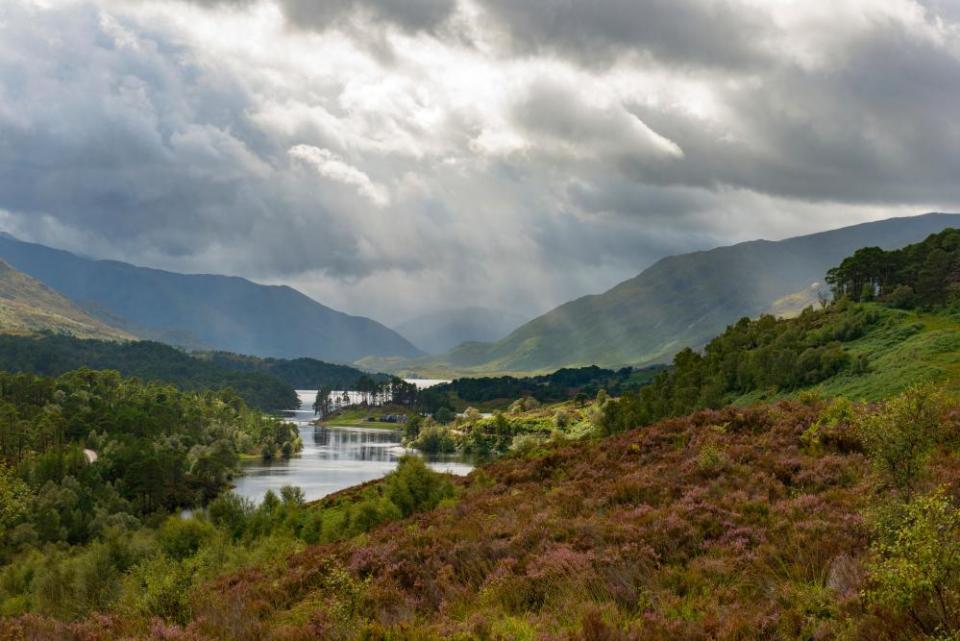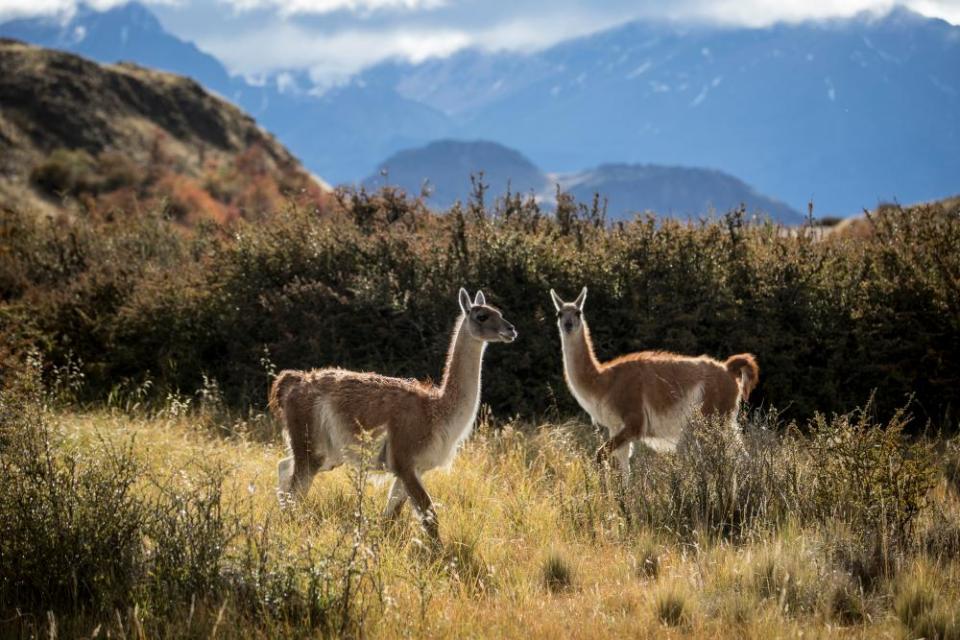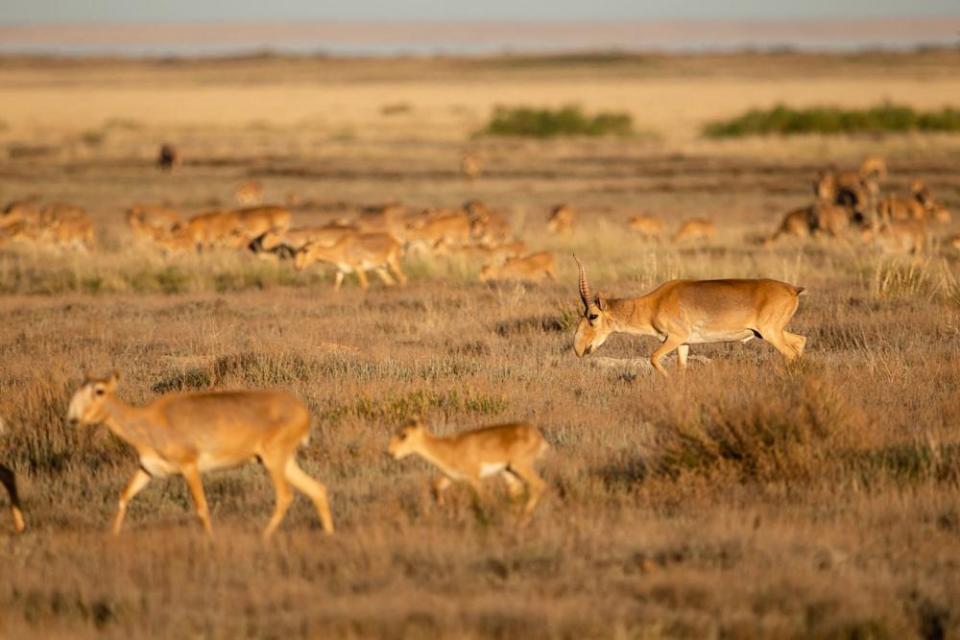Go wild in these countries: five exciting rewilding projects to visit
1 Gorongosa, Mozambique
Mozambique’s civil war (1977-1992) and the poaching connected to it decimated wildlife in Gorongosa national park. Since 2006, the Gorongosa restoration project has set out to bring back nature, starting with buffalo, wildebeest, eland, zebra and other animals being trucked in.
Many species have also recovered naturally under the renewed protection of the park’s 300 rangers. A recent aerial census counted more than 100,000 large animals, including about 200 lions. Three founder packs of African wild dogs and six leopards have also been brought in from South Africa.
This July, conservationists are planning to bring in spotted hyenas from Mozambique’s Karingani game reserve. Hyenas are critical to an ecosystem because, unlike other carnivores, they scavenge dead animals, preventing outbreaks of disease.
What is rewilding?
Rewilding is the restoration of nature in places altered by human activity. From releasing apex predators such as jaguars and wolves to making space for native grasslands in urban areas, rewilding can happen on a big or small scale.
While there are competing definitions, most have the rebuilding of sustainable ecological health at their core, be it the return of kelp forests on the Sussex coast in England or the reintroduction of mockingbirds on the Galápagos Islands.
Why has the term become so popular?
Rewilding has captured the public's imagination by being an environmental movement and a science-based process at the same time. With visions of a wilder planet, high-profile environmentalists such as David Attenborough and George Monbiot inspired millions with paths to a more biodiverse, ecologically healthy future. The success of rewilding pioneers around the world has shown what is possible: from the restoration of Gorongosa national park in Mozambique after the civil war to the Knepp estate in the south of England.
Does rewilding have universal support?
No. Critics of rewilding fear that the term is being used to justify the removal of humans from the landscape, especially farmers and indigenous communities. In the UK, some have dismissed the concept as a fad for 'toffs' and landowners with vast incomes, while others fear it is being used to attack agricultural communities who have farmed areas for hundreds of years.
Can you rewild?
While the boldest rewilding initiatives take place at a landscape scale, small changes can have a big impact. Millions of people changing how they mow their grass or let nature into their gardens, balconies and window sills can add up, providing more space for biodiversity to recover.
“The loss of each predator in an ecosystem can have serious implications because of their top-down control of other species in trophic cascades,” says António Paulo, Gorongosa’s veterinarian, who is overseeing the carnivore reintroductions. “To reverse this situation, we have worked to rewild this amazing place with predators.”
There has also been extensive reforestation around Mount Gorongosa, and local farmers have been encouraged to move away from slash-and-burn agriculture to more sustainable practices, including shade-grown coffee.
How to visit
A full day in an open safari vehicle includes a picnic lunch and, if you’re lucky, a glimpse of nocturnal animals on your way back. You can also visit Mount Gorongosa’s rainforest and the park’s shade-grown coffee project, and take a canoe safari along the Pungué river or a community bicycle tour. The park has a range of accommodation, from campsites to luxury villas.
2 Montana, US
Montana-based non-profit American Prairie is on a mission to create the largest nature reserve in the US, protecting often undervalued temperate grasslands that are vital for supporting biodiversity and sequestering carbon.
The project is anchored around the existing 1.1m-acre Charles M Russell National Wildlife Refuge, but conservation biologists have determined that a prairie would need to be 5,000 square miles (3.2m acres) to be a functioning ecosystem that can support the full set of native plants and animals, and historic grazing patterns.
“As these wild places continue to disappear across the world, restoring this fully functioning grassland ecosystem is critical for the health of our planet and its people,” says Alison Fox, American Prairie’s CEO.
Since 2001, American Prairie has amassed more than 450,000 acres of public and private land. In 2005, it reintroduced bison after a 120-year absence, with a herd that today numbers about 800 animals. Other thriving species include prairie dogs, cougars, swift fox, pronghorn, black-footed ferrets and grassland birds.
How to visit
Start your trip with a visit to the American Prairie National Discovery Center, which opened recently in Lewistown, Montana, and see the interactive ecosystem exhibits. Wildlife watching includes bison, prairie dogs and grassland birds, and other activities include hiking, bike riding and driving tours. There is an array of huts and campgrounds to stay in.

Photograph: Westend61 GmbH/Alamy
3 Affric Highlands, Scotland
Affric Highlands is a 30-year rewilding initiative that will potentially cover more than half a million acres of the central Scottish Highlands, making it the UK’s biggest rewilding project. It will stretch from Loch Ness to Kintail, taking in several glens: Cannich, Affric, Moriston and Shiel.
Trees for Life launched the project in September 2021, in partnership with Rewilding Europe and a coalition of communities and landowners, so there is already plenty to see. Practical ecological restoration work will start next year, with a wide range of wildlife set to benefit, including golden eagles, red squirrels, red grouse, short-eared owls, mountain hares, salmon, trout, ospreys and otters. There will also be efforts made to save the Scottish wildcat from extinction.
What is billed as the world’s first rewilding centre is being built at Trees for Life’s 10,000-acre Dundreggan Rewilding Estate in Glenmoriston, west of Loch Ness, and is due to open in 2023.
“Affric Highlands is a vision of hope, with community involvement at its heart,” says Alan McDonnell, Trees for Life’s programme development manager. “We want to breathe life into the Highlands to help nature return in a big way, supporting re-peopling, boosting social and economic opportunities, and tackling the climate and nature emergencies.”
How to visit
When it opens, Dundreggan Rewilding Centre will include a storytelling space, cafe and accommodation. Until then, there’s much to see in the Affric Highlands area, from Urquhart Bay on the banks of Loch Ness – one of the best surviving examples of ancient wet woodland in Europe – to RSPB Corrimony nature reserve, a haven for black grouse, Scottish crossbills, golden eagles and other birds, with a 13.5km nature trail through Caledonian forest and moorland to Loch Comhnard. You can also hike the Affric-Kintail Way, a 44-mile walking route starting in Drumnadrochit, through the heart of Glen Affric to see remarkable lochs, ancient woodlands and glens.

4 Patagonia National Park, Chile
Patagonia National Park contains 750,000 acres of vast grasslands, forests, alpine lakes and snow-capped peaks. It was created in 2018 with a land donation from Tompkins Conservation, combined with two existing neighbouring nature reserves.
For most of the last century, the central valley was an overgrazed ranch. Volunteers removed 700km of fencing, allowing the return of herds of guanaco, puma and other species, while the absence of sheep and cattle allowed flora, including thick bushy coirón grass, to recover.
The Darwin’s Rhea Reintroduction Centre has released dozens of the flightless birds – which act as an important seed-disperser – back into the ecosystem, and in 2022 three rehabilitated Andean condors were also released.
How to visit
The park is in Patagonia’s remote Aysén region. Check out the visitor centre, a museum connecting the region’s history to the trajectory of globalism, mass species extinction and climate change. Conaf (the national forest corporation) runs park camp grounds, or stay at the Explora Lodge onsite. The park has extensive hiking trails, guided backpacking and wildlife-watching.

5 Central Kazakhstan
Since 2005, the Altyn Dala Conservation Initiative has been restoring ecosystems of steppe, semi-desert and desert across the historic range of the saiga antelope in central Kazakhstan, an area spanning 750,000 sq km.
Spearheaded by the Association for the Conservation of Biodiversity of Kazakhstan (ACBK), with support from the RSPB and others, the project has increased populations of saiga from 50,000 in 2006 to more than 840,000 by 2021, with the migrating animals distributing nutrients and spreading seeds that help steppe plantlife recover.
Data from satellite-tagging of 183 saiga has also helped the Kazakhstan government establish about 12.4m acres of state-protected areas, expand existing ones, remove barriers to saiga migration, tackle poaching, and understand antelopes’ migration patterns for future infrastructure developments.
How to visit
ACBK organises international group tours to protected areas in the Altyn Dala Conservation Initiative project areas in May, June, August and September, including Korgalzhyn State Nature Reserve, a Unesco world heritage site, where there is a chance to see saiga, flamingos, dalmatian pelicans, demoiselle and steppe eagles.
Find more age of extinction coverage here, and follow biodiversity reporters Phoebe Weston and Patrick Greenfield on Twitter for all the latest news and features

 Yahoo Movies
Yahoo Movies 
